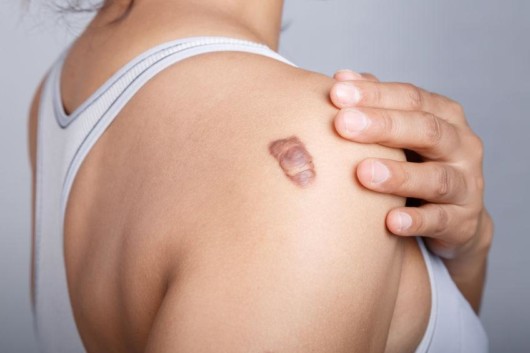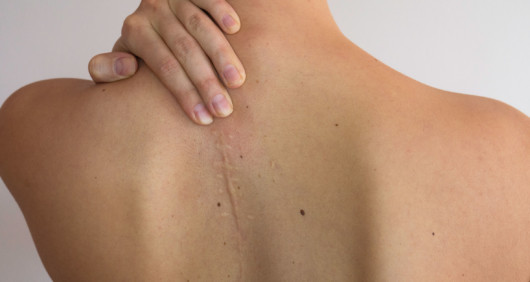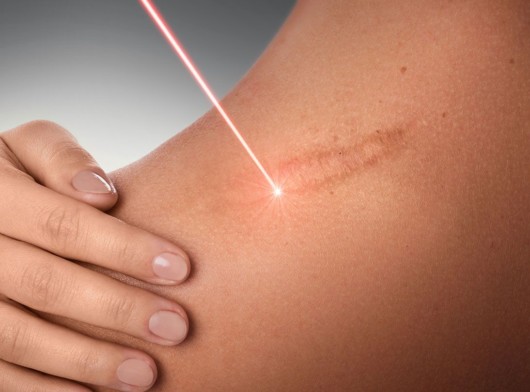You may have heard that scars are permanent, but this isn’t always the case. Depending on the type of scar and how early it is treated, several treatments can help reduce their appearance.
In this post, we’ll look at the different types of scars and how to revise them.
Keloid Scars and Removal
There are a few different types of scars, each requiring a different approach for removal or revision. Let’s start with keloid scars.

Keloids are a prevalent form of scarring. They can occur in any body part, but they are most common on the neck, chest, arms, and legs. Keloids usually rise quickly after an injury and may cause considerable pain and itchiness.
Keloid scars are raised and tend to be red or darker.
But How do They Form?
Skin cells and connective tissue (fibroblasts) start to increase to repair the injury, resulting in keloid formation.
Keloid scars can be challenging to treat. So, the best way to treat them is by removing them surgically. The surgeon will remove all or part of the scar tissue and replace it with new skin grafts. This process can take several months to complete, but minimal scarring should be left behind once it is done.
Also, some laser treatments and steroid injections can help reduce their size, itching, and redness.
Hypertrophic Scars and Removal
Hypertrophic scars are red and often itch or hurt. They are caused by excessive collagen production and can last for years. Compared to keloid scars, hypertrophic scars grow only within the confines of the original skin defect and form weeks after an injury.

Although they tend to resolve within time, they take longer. So, there are a few different ways to treat hypertrophic scars. One is steroid injections and another is surgery. These can minimize or remove the visibility of the scar.
Contractures and Revision Techniques
Contractures are an unusual condition that develops after a significant amount of skin is injured and removed, leaving a scar. The scar formation pulls the skin’s edges together, resulting in a constricted area. It may also take place as scars recover. The muscles, joints, and tendons may become less mobile due to the skin’s shrinkage.
There are a few ways to deal with contractures: surgery, steroid injections, or laser therapy. Each method has its own set of risks and benefits, so you’ll want to consult with your doctor to see what’s best for you.
How to Choose the Right Scar Revision Treatment
There are a few different types of scar revision treatments, so you first need to figure out which one is right for you. The most common treatments include surgery, laser therapy, and topical creams.
Surgery is the most invasive option but offers the best results. Laser therapy is less invasive than surgery and is a good choice for more minor scars. Topical creams are the least invasive option, but they don’t always produce good results.
So which treatment can minimize or remove the visibility of the scar? That depends on the type of scar you have, its location, and how much money you want to spend.
Talk to your doctor to figure out which treatment is best for you.
FAQs
What Does the Term “Scar Revision” Mean?
Surgery to change a scar’s appearance is known as a scar revision. The repair may enhance the scar’s aesthetic appeal, allow movement in a body region that the scar may have limited, or soothe an itchy scar.
When Should You Consider Scar Revision?
It would be best if you waited for your scar to lighten before going for revision. Remember, the scars will shrink and lose some of their visibility as they age. And sometimes, you may wait until the wound has healed, which may take many months or even a year.

Waiting for 60 to 90 days or longer to have revision surgery for some scars is preferable.
Can the Scar Get Worse With Revision?
As with any process requiring an incision, scar revision surgery carries some risks. Risks include the possibility of bleeding, infection, and wound dehiscence.
Can Scars Be Permanently Removed?
You cannot entirely remove scars, although you can frequently conceal them. Your general practitioner might suggest you get treatment from a dermatologist or plastic surgeon.



